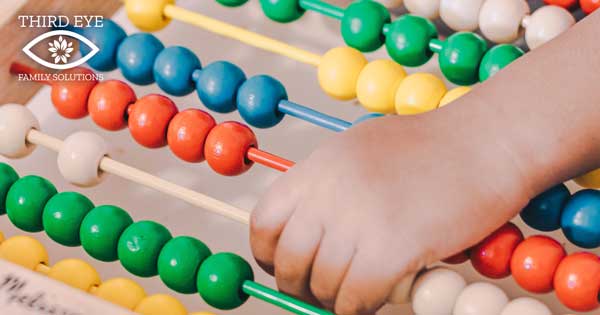Marlie (all clients names have been changed) sat at the playroom table with markers and paper. As she drew, she gave instructions to Jen so that their art would be identical. Jen followed the five-year-old’s instructions throughout the process, and when they were finished Marlie declared that Jen had done a “very very good job.” By giving the young child the job of directing their play, Marlie was able to feel a sense of control and power that was missing in the rest of her life.
This is just one example of the ways that we use play to give our young clients new experiences. Marlie was experiencing many changes in her life, including the addition of a baby sister, a new home, and the recent death of a grandparent. She needed to have moments during which she felt that she could control the outcome of the situation, and directing Jen to create art was one of the rare moments during which she could feel calm and in control.
Play therapy originated in the early 1900’s, when psychotherapists realized that by watching children play they could gain insight into what was troubling them. Over time, many modalities of play therapy have been developed including Theraplay™, sand tray therapy, directed and non-directed play therapy, expressive arts therapy, and more. Most counselors are trained in various methods of play therapy so that they can tailor sessions to the needs of the specific client.
Play is the Language of Children
They play naturally and without prompting. When given access to toys, art supplies, or even pillows most children will enter the playroom and begin to explore. Younger children will act out their trauma using dolls while older children will draw the things that are bothering them. It often takes little or no direction from the counselor for a child to ‘talk’ about the issues they are facing when they have non-threatening, playful ways to do so.
In Some Cases, Very Directed Play Can Be Helpful for the Child
For example, children who are struggling with impulse control benefit from games that require attention to safety and following directions. Children who are experiencing attachment issues can begin to feel safe during repetitive games and the singing of comforting songs. Those who come in dysregulated can often become centered while popping bubbles or squeezing playdough. Having comfortable spaces in our playroom gives all children a place to ‘retreat’ if emotions feel too big to handle.
Puppets and Dolls are Especially Valuable in Play Therapy
A child who feels worried about something they experienced can often let the dog say things that they themselves are concerned to say out loud. Even less threatening is when the dog is being answered by the cat, rather than the counselor herself! Asking questions in character’s voices takes away a layer of seriousness that can make talking about hard things easier.
Young Children Aren’t the Only Ones That Benefit from Play Therapy!
Family play sessions are a wonderful way to practice good communication and work through problems. Older children will often talk more while they play a simple game such as Uno or Connect Four. The ‘distraction’ of the game relieves stress and makes it easier for them to talk – the benefit of not having the counselor’s eyes on them the whole time is another relief to many children.
Any way we play, our clients are able to process emotions and express their feelings through more than just words. When we speak to children in their language, they are more likely to respond. Understanding the nuances of their behaviors makes it easier for us to promote change in attitude and behaviors. Besides, it’s fun for us, too!


Recent Comments